#drawingact150
Explore tagged Tumblr posts
Text
The first section of chapter thirty-eight of the General Statutes is hereby amended so as to include Drawing among the branches of learning which are by said section required to be taught in public schools. – Massachusetts Drawing Act of 1870
I began posting about the 150th anniversary of the Massachusetts Drawing Act on March 16, 2020, with this post: Drawing Act 150: Let’s Celebrate following a meeting with the Drawing Act Coalition that had been held the week before at the MA State House. That was the week that schools closed because of COVID-19.
Soon after, I began remote teaching my fifth and sixth grade art students. I was committed to making the Drawing Act celebration happen and led the young artists through a series of lessons focused on drawing and the Drawing Act. You can see those lessons that follow the one above here: Light on White and here: Human Made Object.
Needless to say, our focus on celebrating the Drawing Act has been diminished by remote learning and by not being able to hold a school wide art show, where visitors would have been encouraged to make a drawing to be submitted to the state wide celebration. However, everyone can still participate individually (see flyer below), and I expect to lead my students through another drawing unit in the fall, which will culminate in Drawing Act submissions. Until then, I’m still submitting some of the artworks to be included on an electronic display.
Join me in congratulating the following students, whose names are on the artworks below, artworks which are being submitted to the Drawing Act Celebration to be held at the Massachusetts State House and other locations this fall and electronically until then:
(Click on first image to see a slideshow)
Thomas Garefalakis
Grace Sabo
Sean Burchard
Lizzy Scharn
Theo Bates
Ori Murphy
Fionn Fallon
Colt Masters
Anna Labastie
Adam Dubowik
Emma Ramsay
Ben Moon
Bridget Larue
Caelin Flynn
Audrey Gowen
Haydn Flores
Jason Cowen
Max Bennett
Finn Lozeau
Patrick Connolly
Taylor Ferlo
Bryant Corbett
Will Cudmore
Mrs. Gentili
Congratulations to all of these artists! If you would like to submit a drawing to the Drawing Act 150 Celebration, see the flyer here:
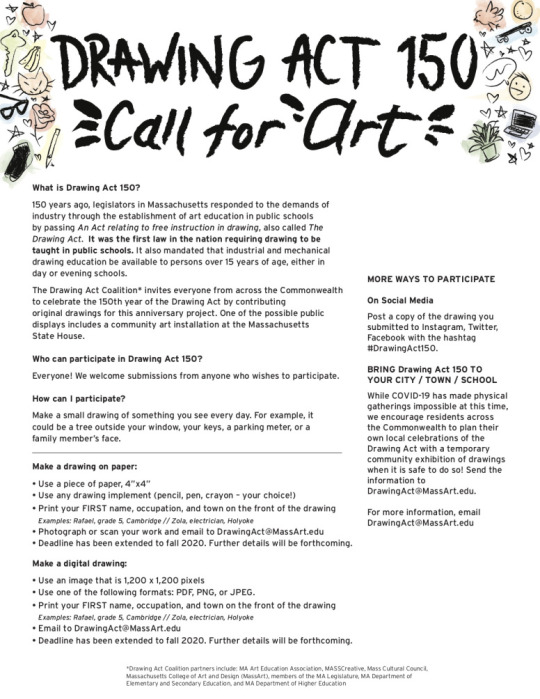
NEW 2020 05 Drawing Act Flyer summer edition
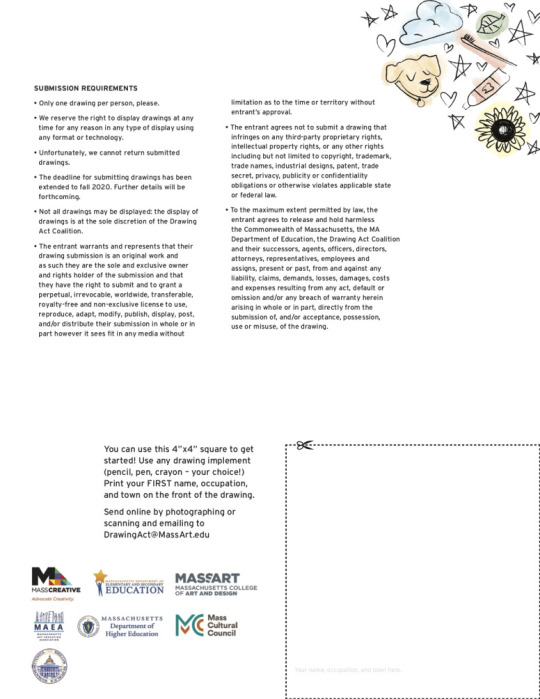
Drawing Act 150 Submissions The first section of chapter thirty-eight of the General Statutes is hereby amended so as to include Drawing among the branches of learning which are by said section required to be taught in public schools.
0 notes
Photo

Sketch of Clara drawing outside (and her sweet drawing of Strega Nona). Sad to hear about Tomie dePaola 😢 #drawingaday #drawingact150 #sketchbook https://www.instagram.com/p/B-a5-fPFrvr/?igshid=yjmleqwygo35
0 notes
Text
“There is strong shadow where there is much light.” Johann Wolfgang von Goethe
For the past two weeks, we’ve been looking at the way light falls on an object and trying to capture it in a drawing with pencil on paper.
Our focus on drawing is directly influenced by the celebration of the Massachusetts Drawing Act of 1870 and the opportunity to submit drawings to a statewide celebration. You can read all about the Drawing Act in this post from March 16, 2020: Drawing Act 150: Let’s Celebrate. At the time of the post, we had just been released from school for what we thought was a two week quarantine due to the rise in incidents of Covid-19. Since then, schools have been closed through the end of the school year. Despite this shift, the Drawing Act Coalition, with the leadership of House Representative Mary Keefe (Worcester) and MassArt Chief of Staff Susana Segat, continues to meet to entertain ways to adapt, revise, and continue the celebration. At this time, entries are still being accepted via email. Because my students have school iPads at home, the Drawing Act unit is still viable. And so we soldier on.

For a couple of weeks, early in the time of remote learning, students copied the drawings of Walter Smith, who (literally) wrote the book on drawing instruction. This is the video I released to students to introduce the lesson and share information about the Drawing Act and Walter Smith: Drawing Instruction
At that point, ALL assignments were optional, so I know not all students participated in the lesson, although many did. Here are a few examples of the work that was submitted:
We took a break from the Drawing Act unit during Week 5 of remote learning – the week before April vacation – to lighten things up with the Make A Chicken project. Once we returned from vacation (staycation) and were energized and ready to get back to the business of drawing, I shared the skill builder lesson video with my students for How to Draw and Shade a Sphere. In teaching remotely, we are limited to the assign/submit method of instruction rather than the casual over-the-shoulder glance at student artwork during class in the physical classroom. We also have limited opportunities for communication. Normally, in a unit such as this one on Drawing, kids would enter the classroom and take sketchbooks from the class bins, read a prompt on the white board and start sketching. This is when those over-the-shoulder glances are so important, both as checks for understanding and as formative assessments. Then we’d move on to direct instruction in the form of a 5 minute demo with the document camera while all looked on. It’s at that point, currently, where remote learning begins, without the benefit of the “bell ringer” or warm up exercise. The video above replaces the 5 minute demo in remote learning, except it isn’t in person AND there’s no “ask me a question” opportunity. Despite the physical disconnect, my students did well with the assignment. Some chose to blend with a tissue or their fingers. Here are two of the 100+ spheres turned in to the Draw and Shade a Sphere assignment:
Irelyn B
Orianna M
During week seven of remote learning, I shared the video Light On White as an introduction to the lesson. The goal was for students to explore the way light falls on a white surface and the grays that are created by multiple geometric planes receiving the light at different angles. As you can see in the video, I offered the idea of folding paper with origami and sketching it, or randomly folding paper and sketching a less organized subject. I wanted it to be open to individual creativity (always) while exposing all students to the concepts of value, shading, and light. As you can see in the artwork below, there is a nice range of organized and random paper foldings. You can also view these artworks on Artsonia here. If you click on one of the photos below, you can view the gallery as a slideshow.
Tyler V
Timothy R
Theo B
Sierra L
Sam C
Roisin W
Quinn G
Molly D
Maxwell B
Max G
Lily T
Kyle R
Kayleigh F
Justin fr
jayden P
Hayden F
Grace S
Emma R
Emma L
Ekakshar B
Drew F
Cormack D
Connor M
Colton K
Colt M
Caelin F
Bridget L
Brady U
Ayden J
Anna L.
Andrew L
Ana T
Alyssa Burdzel
Adam D
During the week that my students were working on this project, I invited them to join me for a half hour virtual class to fold paper with origami. Electives class live sessions are optional in our district, so I was happy to some have kids attend the sessions. Although I originally invited them to make paper cranes or to show me how to make something, I came across an easy way to make Baby Yoda with origami.

That option met with universal approval. We had a lot of laughs and bantered back and forth, yet made some pretty sweet Baby Yodas!
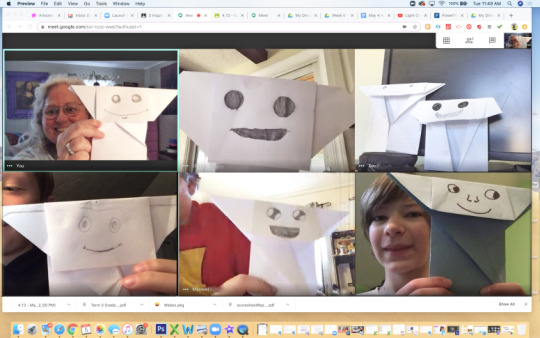
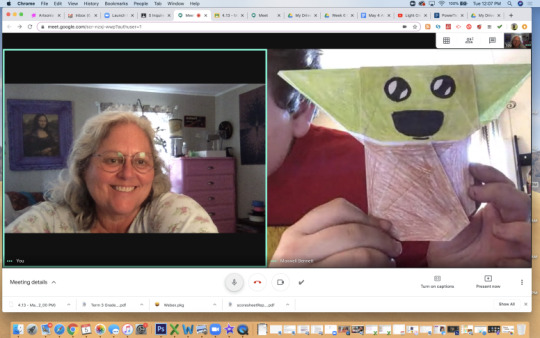

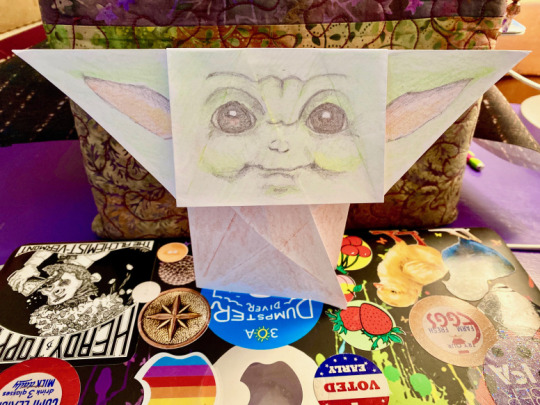
DrawingAct150/Light on White/Wk 7 Remote Learning "There is strong shadow where there is much light." Johann Wolfgang von Goethe For the past two weeks, we've been looking at the way light falls on an object and trying to capture it in a drawing with pencil on paper.
#arted#ArtEducation#artsed#Artsonia#DrawingAct150#MiscoeHill#MonaLisaLivesHere#mursd#mursdvisualart#RemoteLearning
0 notes
Text
“The teacher showed us how to see proportions, relationships, light and shadow, negative space, and space between space – something I never noticed before! In one week, I went from not knowing how to draw to sketching a detailed portrait. It literally changed the way I see things” Daniel H. Pink
This post features the work of my fifth and sixth grade art students who have been exploring drawing through lessons primarily derived from the Drawing Instruction manuals of 1872 by Walter Smith, which he developed to guide educators after the establishment of the Drawing Act of 1870. May 13, 2020, marks the 150th anniversary of the Drawing Act of Massachusetts.
Lizzy S
This is the third of three posts about our work with Drawing Instruction as defined by Walter Smith. I recommend the reader (that’s you!) begin by reading Drawing Act 150: Let’s Celebrate followed by Drawing Act 150/Light on White/Wk 7 Remote Learning before reading this post. This post, Drawing Act 150/Human Made Object//Wk 8 Remote Learning, showcases the culmination of the exploration of contour, light, and shading for my students. Their artworks from this post and our online gallery at Artsonia will be emailed as digital artworks to be included in the statewide celebration. Everyone from across the state is invited to participate in this event:
NEW 2020 05 Drawing Act Flyer summer edition
NEW 2020 05 Drawing Act Flyer summer edition
The assignment for this final phase of the project, Human Made Object, called for students to choose a human made, manufactured object from around the house to draw. These are the instructions they read in Google Classroom:
✍️Once you’ve watched the video, choose a human made, manufactured object from around the house. Set it on a white surface and illuminate it with a flashlight or lamp.
✍️Sketch the edges/outlines of the object. Add a grayscale at the top or bottom or on another sheet of paper if you forgot to leave room.
✍️Add shading to your drawing making sure you find areas in the human made object that correspond to every section of your gray scale.
✍️Blend with a tissue or soft paper if you choose.
✍️Erase any extraneous marks. Use your eraser to bring back the bright white areas.
✍️Take a photo of the page to include only the sketch, no background, no grayscale. Crop these out if they are included.
✍️Type your first name and last initial using the Mark-Up option in the regular iPad photo editing tools. See how-to links in earlier assignments.
Still of lesson video
Had we been at school rather than in our homes with remote learning, students would have had charcoal pencils, kneaded erasers, blending stomps, as well as Yours Truly looking over their shoulders offering suggestions and demonstrating technique as needed, AND providing reminders about how to photograph artwork, I expect the final drawings would have blown our socks off. However, given that was not the situation and my students were working with #2 pencils and tissues for blending on paper on hand, these young artists knocked it out of the park! (But then again, they always do!) See for yourself (click on a drawing to view as a slide show):
Bryant C
Adam D
Taylor F
Patrick C
Finn L
Max B
Hayden F
Jason C
Audrey G
Caelin F
Bridget L
Ben M
Emma R
Adam D
Grace S
Sean B
Anna L
Colt M
Fionn F
Orianna M
Theo B
Lizzy S
I’ve documented our process with this project for myself as well as art educators across Massachusetts who would like to celebrate the Drawing Act 150th anniversary by submitting student drawings. These were my plans based on the resources I gathered. Feel free to use as much of this as you’d like and to tweak it to make it your own great fit for your demographic of students.
I had planned to have a drawing table set up at our spring art show where visitors could create a drawing to submit to the celebration. Because of school closure due to Covid-19, that didn’t happen. I look forward to doing this again in the fall, maybe even in physical school, and will reach out at that time for submissions from the community. I’m really glad to have had this trial run, even as remote learning. It has given me a good sense of how my students will respond (eagerly) when I facilitate this again. I am looking forward to celebrating the 150th anniversary of the Massachusetts Drawing Act of 1870 with a lot of artwork and a whole lot of people in the future!
Drawing Act150/Human Made Object/Wk8 Remote Learning "The teacher showed us how to see proportions, relationships, light and shadow, negative space, and space between space - something I never noticed before!
0 notes
Text
“Drawing depends upon two faculties – understanding and taste; skill being the result of practice or experience. It is of the utmost consequence that the first faculty should be developed in harmony with the second.” – Walter Smith
Massachusetts Drawing Act of 1870
This May we celebrate the 150th anniversary of the Massachusetts Drawing Act. On May 16, 1870 legislators in Massachusetts signed into law “An Act Relating to Free Instruction in Drawing”, also know as Massachusetts Drawing Act of 1870.
The Massachusetts Drawing Act of 1870 is regarded as a benchmark in the history of American education. With ratification of this legislation, Massachusetts became the first state to mandate drawing education in its public schools, thus placing drawing alongside eight other subjects required in Massachusetts public schools during the late-nineteenth century. These subjects were orthography (the study of spelling and word structure), reading, writing, English grammar, geography, arithmetic, the history of the United States, and good behavior.* (Richardson & Sanger, 1860, p.215)
Drawing Act 150 Celebration
The Representative’s Conference Room at the MA State House
In my position as Advocacy Liaison for the Massachusetts Art Education Association, I was invited to a meeting at the Massachusetts State House on February 13 to discuss a possible statewide celebration for the anniversary of the Drawing Act. State Representative Mary Keefe (Worcester) and Massachusetts College of Art Chief of Staff, Susana Segat, worked together with their staff to pull together a group of collaborators from various arts affiliates to be known as The Drawing Act Coalition*. Together we developed a celebration called Drawing Act 150, to be celebrated at the State House in May*. All of the information can be found here:
A PDF of this flyer can be found here: Drawing Act 150 call for art 2020
Please note: Keeping in mind that schools have recently been closed throughout Massachusetts until at least April 7, our plans for the Drawing Act 150 celebration may change. I will update this post when that happens.
MAEA Drawing At School 1870-2020 Exhibit
In conjunction with the State House observation and celebration of the anniversary of the Drawing Act, the Massachusetts Art Education Association is hosting an exhibit at the State Transportation Building in Boston at the end of April. All details and registration for this exhibit can be found here:
Note: Again, should exhibit plans be altered by current school closings, I will update the information.
Walter Smith, Art Master
In order to facilitate implementation of programming for the then new Drawing Act, Massachusetts hired Walter Smith of England to serve as the State Director of Art Education. Smith was also named General Supervisor of Drawing in the Boston Public Schools. The first order of business was for Smith to develop a program of study in drawing and to create resources for classroom teachers to use as they instructed students in drawing.
“What we are trying to do in our lessons is to make the children know how to draw, not how to make drawings, and I hope you see the distinction. And the great reason for them to draw is, that the process of drawing make ignorance visible; it is a criticism made by ourselves on our perceptions, and give physical evidence that we either think rightly or wrongly, or even do not think at all.”* – Walter Smith
Walter Smith authored several books about drawing instruction, and over the past few months, I have acquired a few of them through eBay and abebooks. I am especially pleased to have acquired an original 1872 edition of The Teachers’ Companion to the American Drawing-Slates and Cards by Smith.
Original 1872 edition
To add to the excitement, the book is inscribed by J.W.C. Gilman to Lucas Baker on November 17, 1872.
It also includes these notes on the otherwise blank first page of the text:
And there are margin sketches throughout the book presumably made by Lucas Baker. I love that!
Margin sketches presumably by Lucas Baker
I was able to find the book through the digitizing of library books by Google. I downloaded the book, cleaned up the digitizing by discarding sloppy scans, added a copy of the cover, and uploaded it to my drive. you can see the book and download it in its entirety here.
In researching J.W.C Gilman, I learned that he is a co-author of Manual of Freehand Penmanship published in 1877. I was also able to find this book through the digitizing of library books by Google. You can see and download the book in its entirety here.
Drawing Cards
I have an especially keen interest in the Drawing Cards (see more about the Drawing Cards below). I am curious how my fifth and sixth grade students would respond to learning to draw this way. With that in mind, I isolated the Drawing Card images throughout the book and compiled them in a new document to share with my students. The collection of Drawing Cards can be found here.
Drawing card
As the Drawing Act was instrumental in establishing art education in public schools, it is understood that teachers of the lower grades taught all subjects, spending the full day with their students. Therefore, whether or not the teachers possessed an ability of their own, they had to learn how to draw well enough to demonstrate for their students.
Teachers carefully made the drawings on a blackboard, and students imitated them using chalk on slates. Walter Smith’s recommendation was for drawing instruction four times per week of a half an hour each or six of twenty minutes each for children under 10 years of age. Older students could have longer, less frequent lessons.
From The Teachers’ Companion to the American Drawing-Slates and Cards
Drawing Slates 2020
Because I now have the document containing all of Walter Smith’s Drawing Slates from The Teachers’ Companion to the American Drawing-Slates and Cards, I will be sharing it with my students through Google Classroom. Imagine how Walter Smith would react to that! I am going to encourage my students to follow the sequence of the cards and to draw in their handmade sketchbooks using pencil. I am excited to hear how they respond to the challenge and to see their drawings. here are some more of the Drawing Card images:
A selection of the Drawing Cards
Passion Project
When I first heard about a celebration of the Drawing Act, I was immediately interested. It wasn’t until I started researching the act and those who implemented instruction that I realized I had included a paragraph about the Drawing Act in my Master’s thesis back in 2002! No wonder it was so familiar to me!
Master of Education in Art Thesis
For the past few months I have been busy searching out resources and reading the books I’ve acquired. This has become a bit of a passion project for me. Along with the digital books with links included in this post, I have physical copies of a few others:
At this point in the process I am ready to attempt the drawings along with my students. I am looking forward to starting my own sketchbook of drawings and promise to share as I go. I’ll be posting on social media with the hashtag #DrawingAct150 Please join me!
* Notes courtesy of Billy Claire
*The Drawing Act Coalition affiliates include Massachusetts House of Representatives, MA Department of Elementary and Secondary Education, MA Department of Higher Education, Mass Creative, Mass Cultural Council, Massachusetts Art Education Association
*See notes above about possible changes due to state mandated school closings
Drawing Act 150: Let’s Celebrate "Drawing depends upon two faculties - understanding and taste; skill being the result of practice or experience.
0 notes